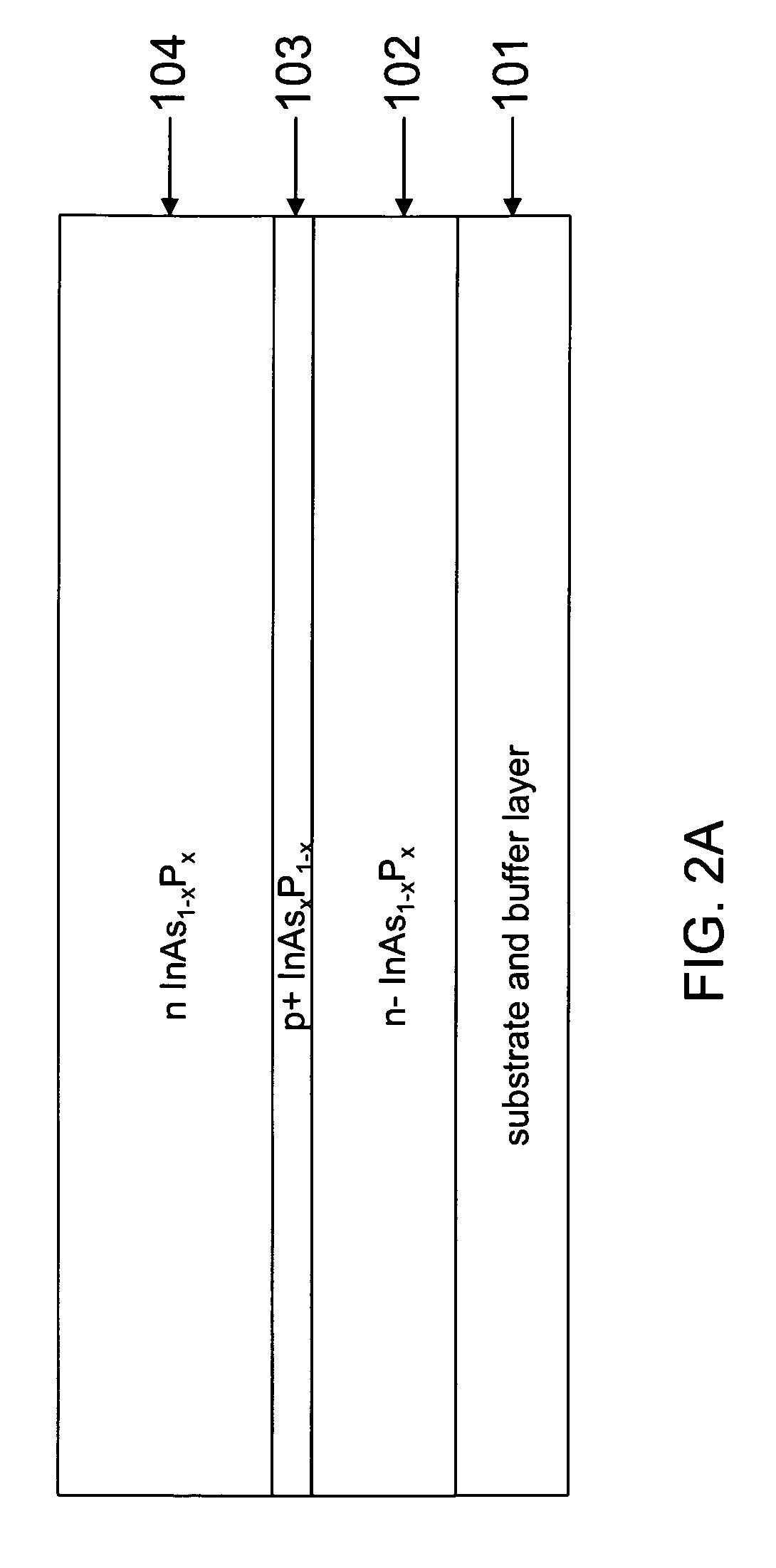Low power bipolar transistors with low parasitic losses
- Summary
- Abstract
- Description
- Claims
- Application Information
AI Technical Summary
Benefits of technology
Problems solved by technology
Method used
Image
Examples
Embodiment Construction
[0045]The invention is described below, with reference to detailed illustrative embodiments. It will be apparent that the invention can be embodied in a wide variety of forms, some of which may be quite different from those of the disclosed embodiments. Consequently, the specific structural and functional details disclosed herein are merely representative and do not limit the scope of the invention.
[0046]The invention relates to bipolar junction transistors (BJTs) and heterojunction bipolar transistors (HBTs) and methods for making the same. HBTs with architectures that enable the independent optimization of extrinsic base resistance and base-collector capacitance Cbc are highly desirable. An embodiment of the present invention provides a transistor architecture for which the base contact area can be decoupled from the collector and hence allows for dramatic reduction in the parasitics of transistors. A transistor in one embodiment of the present invention uses a selectively doped s...
PUM
 Login to view more
Login to view more Abstract
Description
Claims
Application Information
 Login to view more
Login to view more - R&D Engineer
- R&D Manager
- IP Professional
- Industry Leading Data Capabilities
- Powerful AI technology
- Patent DNA Extraction
Browse by: Latest US Patents, China's latest patents, Technical Efficacy Thesaurus, Application Domain, Technology Topic.
© 2024 PatSnap. All rights reserved.Legal|Privacy policy|Modern Slavery Act Transparency Statement|Sitemap



